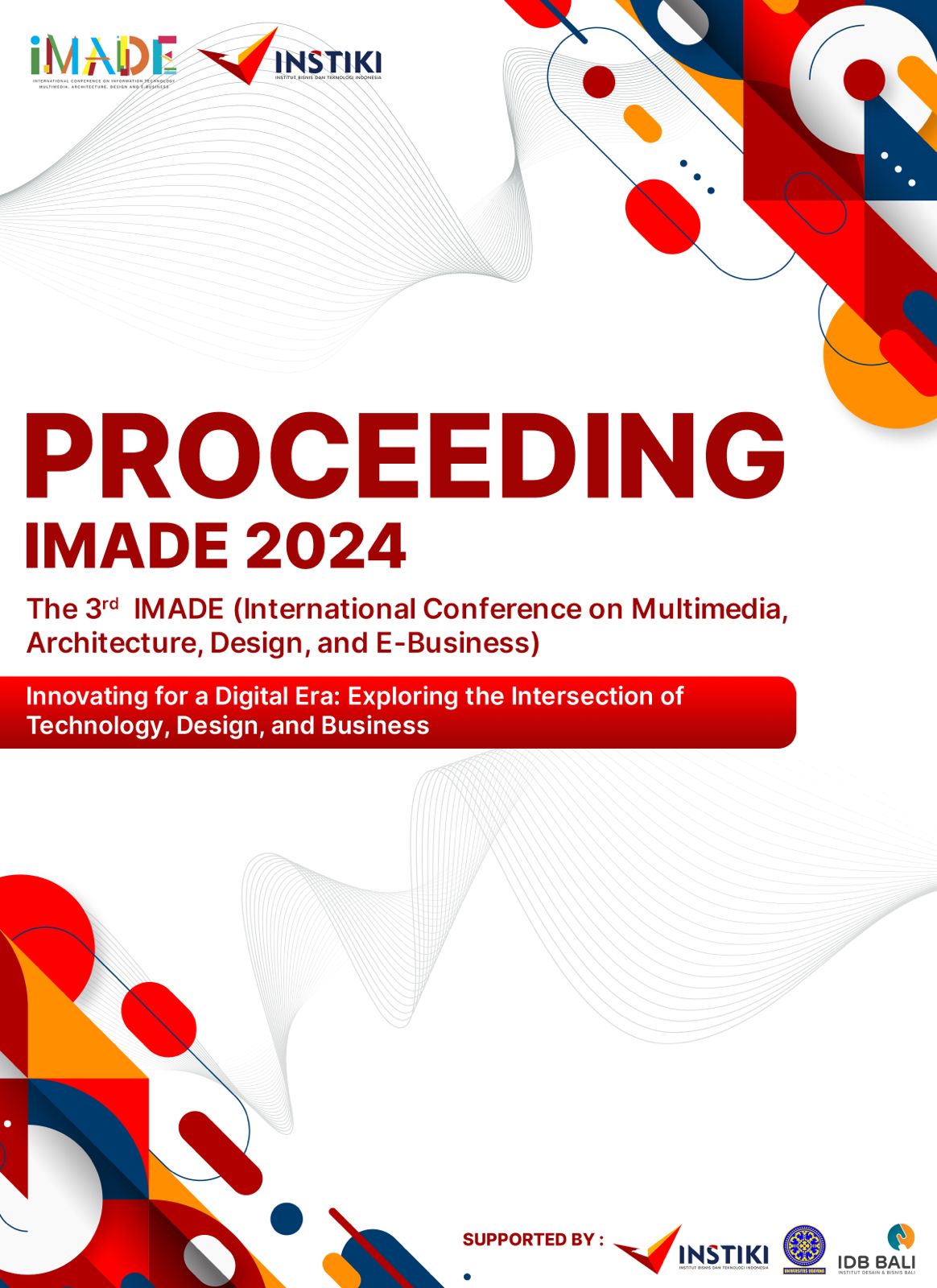TOURISTS' REVISIT INTENTIONS TO KEBUMEN: DESTINATION IMAGE REVIEW
Keywords:
cognitive image, affective image, unique image, revisit intentionAbstract
This study aims to analyze the influence of three dimensions of destination image, namely cognitive image, affective image, and unique image on tourists' intention to revisit Jatijajar Cave tourist destination in Kebumen. A quantitative approach was used in this study with a survey method and data analysis using Structural Equation Modeling-Partial Least Squares (SEM-PLS). Data were obtained from 100 respondents who had previously visited the destination. The results showed that the three dimensions of destination image significantly and positively influence revisit intention, with unique image making the largest contribution. The findings provide important implications for tourist destination managers in improving attractiveness and tourist experience through appropriate marketing strategies. This study also identified some limitations, such as not considering the impact of the COVID-19 pandemic. Managerial recommendations include improving facilities and managing tourist areas to increase visitor comfort.
References
Ariesta, D., Sukotjo, E., & Suleman, N. R. (2020). The Effect Of Attraction, Accessibility And Facilities On Destination Images And It’s Impact On Revisit Intention In The Marine Tourism Of The Wakatobi Regency. INTERNATIONAL JOURNAL OF SCIENTIFIC & TECHNOLOGY RESEARCH, 9(3), 6605–6613.
Bianchi, C., & Pike, S. (2011). Antecedents of Destination Brand Loyalty for a Long-Haul Market: Australia’s Destination Loyalty Among Chilean Travelers. Journal of Travel & Tourism Marketing, 28(7), 736–750. https://doi.org/10.1080/10548408.2011.611742
Bianchi, C., Pike, S., & Lings, I. (2014). Investigating attitudes towards three South American destinations in an emerging long haul market using a model of consumer-based brand equity (CBBE). Tourism Management, 42, 215–223. https://doi.org/10.1016/j.tourman.2013.11.014
Bigné, J. E., Sánchez, M. I., & Sánchez, J. (2001). Tourism image, evaluation variables and after purchase behaviour: inter-relationship. Tourism Management, 22(6), 607–616. https://doi.org/10.1016/S0261-5177(01)00035-8
del Bosque, I. R., & Martín, H. S. (2008). Tourist satisfaction a cognitive-affective model. Annals of Tourism Research, 35(2), 551–573. https://doi.org/10.1016/j.annals.2008.02.006
Dwi Rahmawati, E., & Intan Prastiwi, P. (2024). Enrichment: Journal of Management Branding Kebumen Geopark through enhancing the intent of tourists to return. In Enrichment: Journal of Management (Vol. 14, Issue 4).
Echtner, C. M., & Ritchie, J. R. B. (n.d.). The Meaning and Measurement of Destination Image. In THE JOURNAL OF TOURISM STUDIES (Vol. 14, Issue 1).
Hidayatullah, S., Windhyastiti, I., Patalo, R. G., & Rachmawati, I. K. (n.d.). Citra Destinasi : Pengaruhnya terhadap Kepuasan dan Loyalitas Wisatawan yang Berkunjung ke Gunung Bromo.
Lee, B., Lee, C.-K., & Lee, J. (2014). Dynamic Nature of Destination Image and Influence of Tourist Overall Satisfaction on Image Modification. Journal of Travel Research, 53(2), 239–251. https://doi.org/10.1177/0047287513496466
Masykur, F., Widiartanto, W., & Saryadi, S. (2022). Pengaruh Destination Image dan Fasilitas Wisata terhadap Revisit Intention (Studi pada Pengunjung Wisata Alam Seroja di Kabupaten Wonosobo). Jurnal Ilmu Administrasi Bisnis, 11(2), 170–179. https://doi.org/10.14710/jiab.2022.34251
Oliver, R. L., & Swan, J. E. (1989). Consumer Perceptions of Interpersonal Equity and Satisfaction in Transactions: A Field Survey Approach. Journal of Marketing, 53(2), 21. https://doi.org/10.2307/1251411
Pai, C., Kang, S., Liu, Y., & Zheng, Y. (2021). An Examination of Revisit Intention Based on Perceived Smart Tourism Technology Experience. Sustainability, 13(2), 1007. https://doi.org/10.3390/su13021007
Pike, S., & Ryan, C. (2004). Destination Positioning Analysis through a Comparison of Cognitive, Affective, and Conative Perceptions. Journal of Travel Research, 42(4), 333–342. https://doi.org/10.1177/0047287504263029
Pine, B. J. , & Gilmore, J. H. (2011). The Experience Economy: Work Is Theatre & Every Business a Stage.
Pratminingsih, S. (2014). Roles of Motivation and Destination Image in Predicting Tourist Revisit Intention: A Case of Bandung – Indonesia. International Journal of Innovation, Management and Technology, 5(1). https://doi.org/10.7763/ijimt.2014.v5.479
Ragab, H., Mahrous, A. A., & Ghoneim, A. (2020). Egypt’s perceived destination image and its impact on tourist’s future behavioural intentions. International Journal of Tourism Cities, 6(2), 449–466. https://doi.org/10.1108/IJTC-12-2018-0105
Rahmawati, E. D., Fadila, S., & Habiibika Baaq, S. (2023). Smart Tourism Technology Dan Kepuasan Wisatawan Untuk Berkunjung Kembali Di Wisata Heritage Kota Surakarta. In Journal Management (Vol. 22, Issue 1).
Stylidis, D. (2022). Exploring Resident–Tourist Interaction and its Impact on Tourists’ Destination Image. Journal of Travel Research, 61(1), 186–201.
Weru, J. N., & Njoroge, J. M. (2021). Investigating the influence of business events experience on international visitors’ perceived destination image: The case of Kenya. Journal of Convention & Event Tourism, 22(5), 384–406. https://doi.org/10.1080/15470148.2021.1895017
Yoon, Y., & Uysal, M. (2005). An examination of the effects of motivation and satisfaction on destination loyalty: a structural model. Tourism Management, 26(1), 45–56. https://doi.org/10.1016/j.tourman.2003.08.016
Downloads
Published
How to Cite
Issue
Section
License
Copyright (c) 2024 Esti Dwi Rahmawati, Putri Intan Prastiwi, Sarah Fadila, Shalli Habiibika Baaq

This work is licensed under a Creative Commons Attribution-NonCommercial-ShareAlike 4.0 International License.





